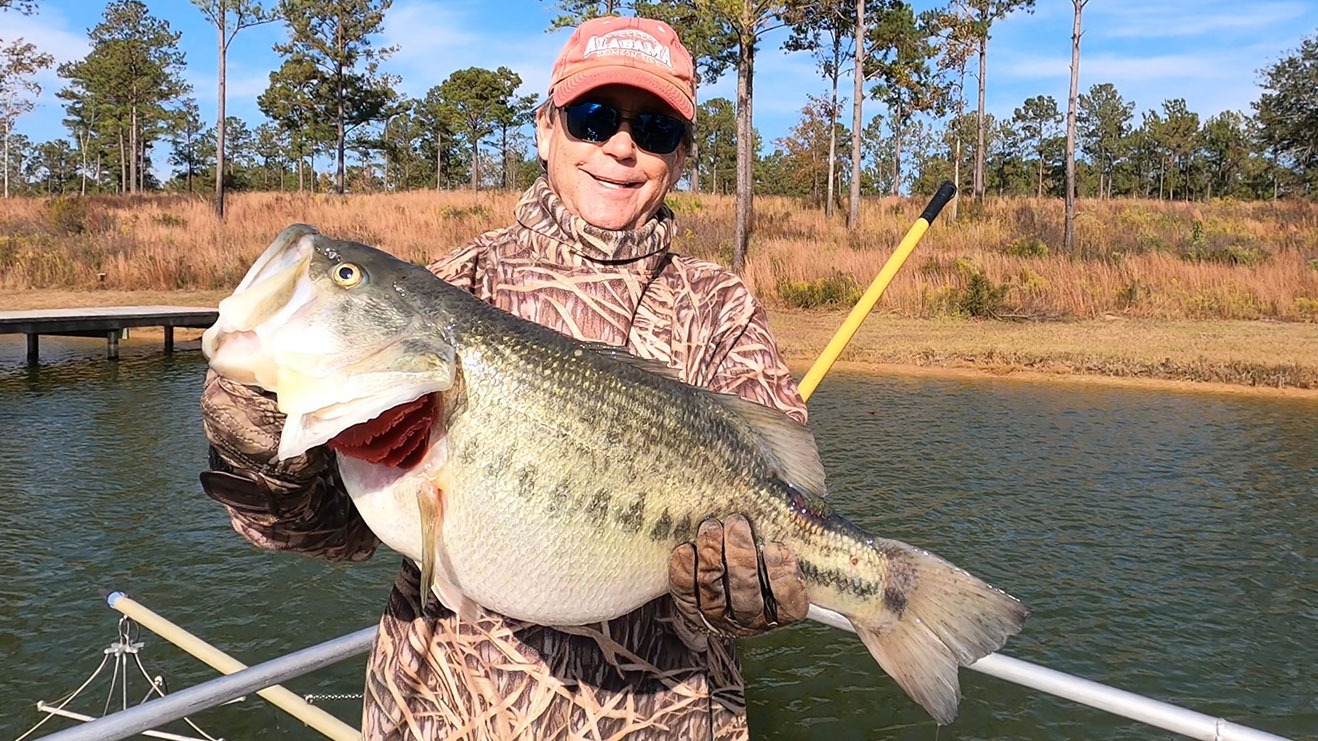
What are your recommendations on how to both control algae growth and grow big fish?
Typically, to grow trophy-sized fish, you need a healthy and abundant phytoplankton assemblage (phytoplankton are microscopic algae). However, similar to most things, there is an ideal range that is beneficial for fish production without causing other issues like fish kills. I would recommend having a water sample taken to assess water quality parameters and determine what species of algae are present. A fisheries biologist can then evaluate those results to determine if nutrient management or fertilization are needed. A trained fisheries biologist can help you promote beneficial green algae and prevent harmful blue-green algae, thus ensuring fish production is maximized and in-line with stakeholder goals.
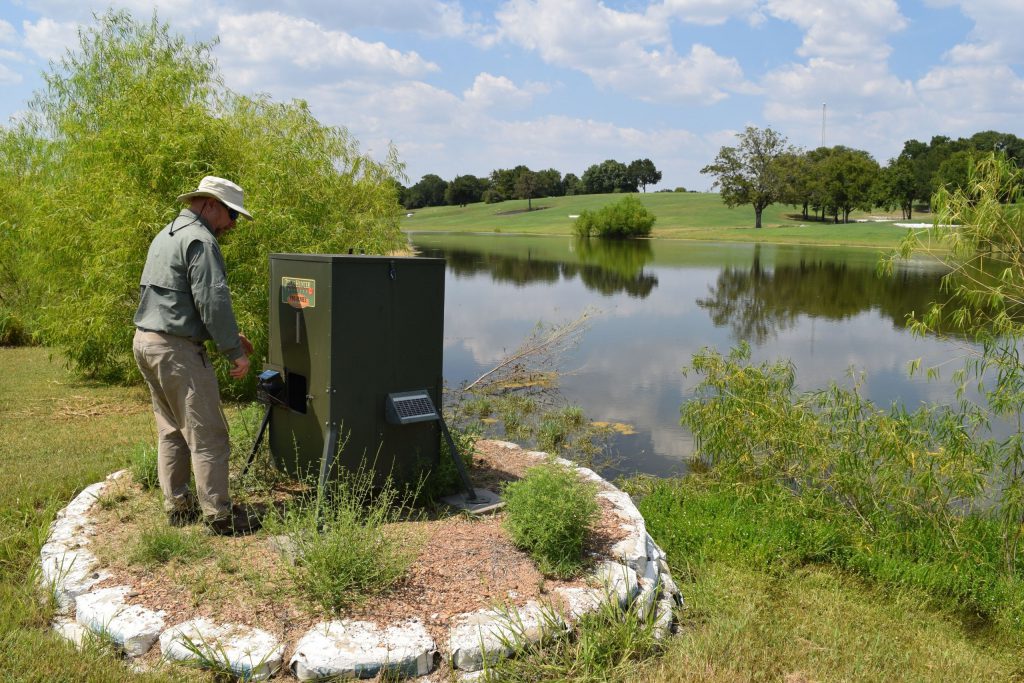
Should I fertilize my fishery? And, if so, when?
Fertilization can be a powerful tool to help maximize productivity and promote fish growth. When properly conducted in concert with complementary management techniques (like spot treatments for undesirable plant or algae growth), fertilization can boost the carrying capacity of a lake or pond and the growth potential of your fish. It is typically done in the spring and summer months. However, it is not the best option for all ponds. For example, it may not be the best choice for a multi-use waterbody since the goal is to boost phytoplankton abundance, which will result in low water clarity – potentially impacting recreation. Another thing to keep in mind is if a lake or pond is already facing a nuisance aquatic plant or algae issue, fertilization can exacerbate the problem. Knowledge of the fish present in your waterbody, the current state of aquatic plant and algae productivity, and baseline water quality are all important when deciding if fertilization is right for your pond.
What time of year is the best time for fish stocking?
Multiple factors play into when we stock, such as the source of fish and lake or pond location. For much of the country, the best timeframes are spring and fall, when surface water temperatures are as close as possible to ideal hauling temperatures, which is done in insulated transport tanks. Transporting fish is inherently stressful for them, so we employ several strategies targeted at minimizing the stressors wherever possible. Hauling water is kept cool for two important reasons: First, ammonia (produced by fish at higher rates while undergoing stress) becomes more toxic to fish as the temperature and pH of the hauling water increase. Second, colder water holds more oxygen than the same volume of warm water. Another stress associated with stocking is acclimation to the lake or pond water upon arrival; the larger the difference between hauling water and pond water, the more stressful the transition will be for the fish. In order to avoid long acclimation times and associated higher mortality rates, stocking is generally performed when temperatures are cool.
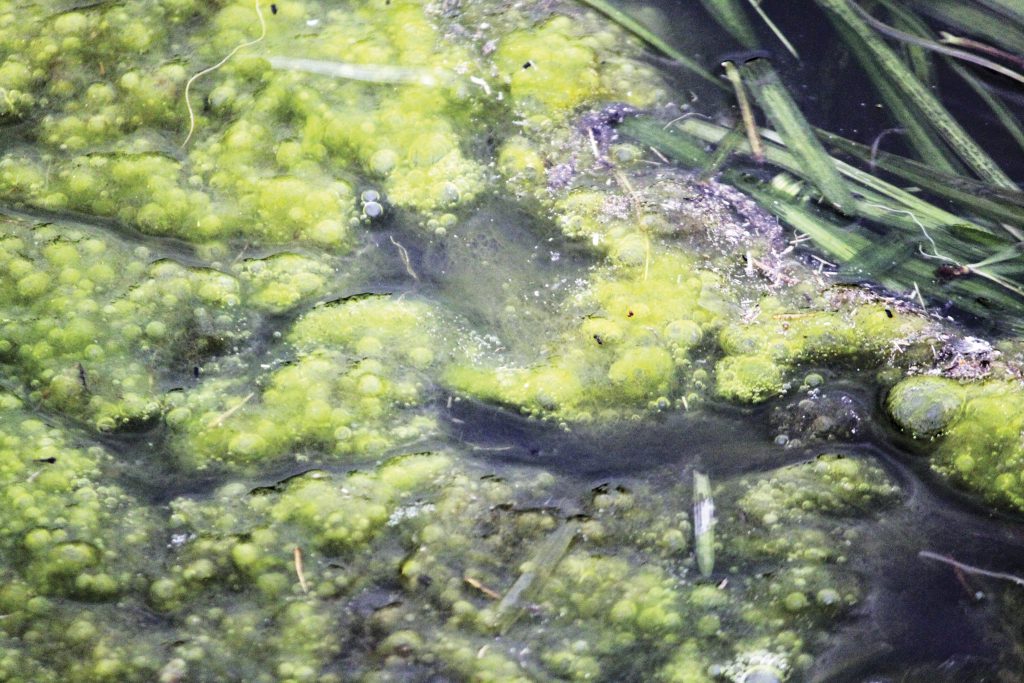
How do I best manage my phosphorus levels?
Too much phosphorous can actually be considered a pollutant. Therefore, phosphorous management begins with a water quality test to measure the amount of phosphorous in the lake or pond. If too high, there are a number of approaches to phosphorous management. First, realize that high phosphorous is likely reflective of watershed characteristics. You can begin by mitigating factors in the watershed that you control – reduce lawn fertilizer use, introduce a beneficial vegetative buffer, and properly manage stormwater runoff. In-lake approaches include the application of nutrient-binding products such as Alum or Phoslock, which will…. If you are feeding fish, then you should use a low-phosphorous food. Other new and innovative approaches include biochar, which physically removes phosphorous from the water column. Not only is biochar effective at removing nutrients, but it also can absorb contaminants, heavy metals, hydrocarbons, and suspended solids. For phosphorous in the sediment, dredging and aeration offer solutions. Oxygen is a key player in the battle against undesirable nutrients by facilitating the conversion of phosphorus to forms that do not sustain algae development. Therefore, the use of bottom-diffused aeration or nanobubble aeration can play important roles in phosphorous remediation.
Do too many fish in a pond impact the pond’s overall health?
It depends on which species are overabundant and to what degree. For example, too many Bluegill can limit Largemouth Bass recruitment by consuming bass fry. Conversely, too many bass can quickly overgraze the available forage (like Bluegill) and cause the fishery to be comprised primarily of stunted bass—and with small insectivorous fish absent, nuisance insects like mosquitos can become a problem. Similarly, too many benthic fish such as carp can cause excessive foraging, destabilizing lake sediments, uprooting plants and causing high turbidity. Each pond has a healthy carrying capacity range and the density you manage for within that range is directly related to your goals for the fishery. If high catch rates are important, you may want to keep your gamefish density high and add forage annually. If trophy fish are more in line with your goals, then a lower density will likely be necessary.
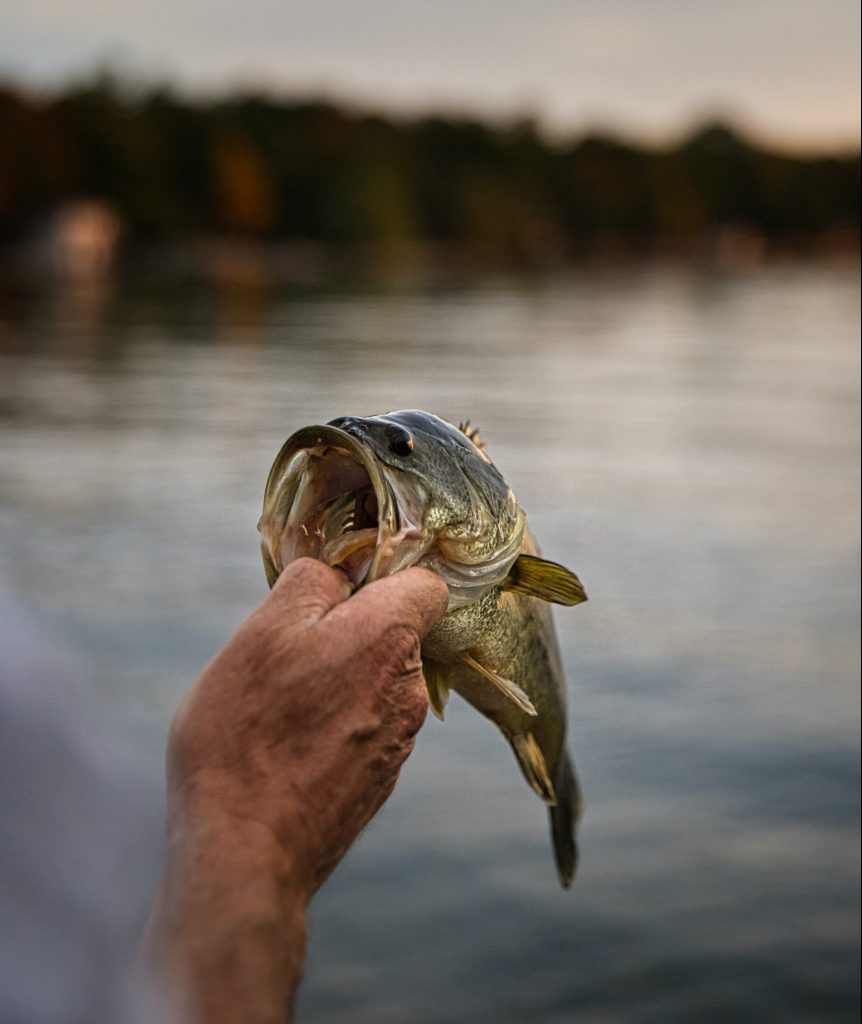
Do you recommend removing small bass so larger bass have access to more baitfish?
There are a number of tools in the fisheries biologist’s toolbox and one of the most common approaches for bass management in lakes and ponds is selective harvest of small bass. Generally, the idea is that if you remove some small bass, the fish that remain will grow faster due to reduced competition. However, it is not that simple. First, an electrofishing survey should be conducted to assess the relative abundance of bass and baitfish. Then, a fisheries biologist can determine if harvest is recommended and, if so, how many bass or pounds of bass per acre should be removed. Waterbodies vary considerably so simply harvesting bass without a Fisheries Management Plan from a biologist is typically not warranted. A fisheries biologist will assess bass abundance, size structure and body condition (weight of fish) before making any recommendations.
What are the benefits of adding bait/forage fish to the lake?
Stocking baitfish into a lake can often improve growth of sportfish like Largemouth Bass. However, the decision of what to stock and when to stock should be determined by a fisheries biologist, preferably after an electrofishing evaluation to determine the current status of the lake. Additional considerations include the goals of the lake owner, whether the species will reproduce or not, what species of sportfish are present, and budget. Collectively, all of these factors can be used to determine if stocking is necessary and, if so, what species to stock. Stocking without these pieces of information may or may not be successful.
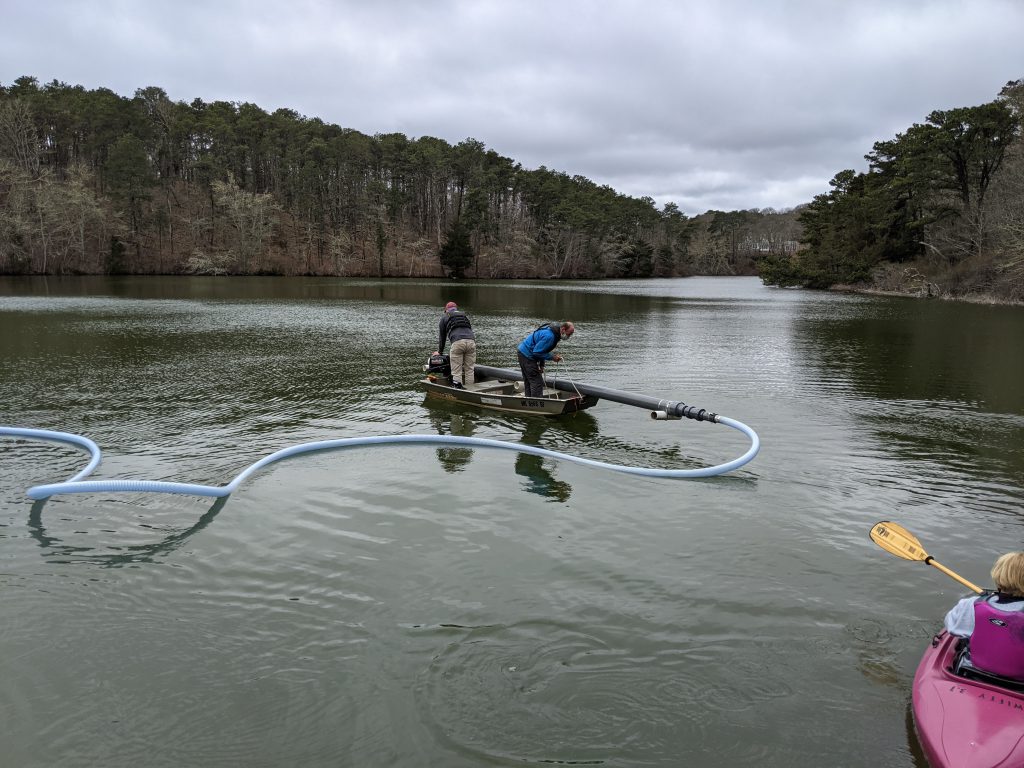
What are the best ways to reduce probability of major fish kills from water chemistry, in particular dissolved oxygen (DO) depletion?
Dissolved oxygen (DO) concentration can seem quite complicated. When you break it down, there are several major pieces on each side of the equation. The primary pathways for DO production are diffusion from the atmosphere (largely limited by surface area to depth ratio), and photosynthesis. The primary pathways for oxygen consumption are respiration and decomposition. The more productive a system is, the higher the potential for DO stress. In order to avoid DO depletion it is important to either limit productivity through nutrient reduction or to artificially increase the amount of DO present through pond aeration, circulation or oxygenation. Often, pond aeration can be the most economical option to avoid fish kills for warmwater fish. With cold water fish such as trout, it is important to keep nutrients low because aeration de-stratifies the water column and often results in water that contains enough oxygen, but is no longer cool enough for trout to survive.
Do non-native invasive weeds affect the health or success of a fishery?
Non-native plants are characteristically adaptable to new habitats. They also tend to grow aggressively and have a high reproductive capacity. They are often introduced to a new location that is not characterized by the environmental checks and balances (such as seasonal weather, diseases, or insect pests) that kept them under control in their native range. Their vigor, combined with a lack of natural enemies, often leads to outbreak populations. Invasive plants often have negative effects on the ecosystem with high costs for control. While some anglers enjoy fishing near non-native plants, they typically are less desirable from an ecological standpoint. They are known for outcompeting native plants, reducing spawning areas, inhibiting other recreational activities such as boating and swimming, and affecting reservoir operations, and increasing so much that predator-prey interactions of fish are negatively affected.
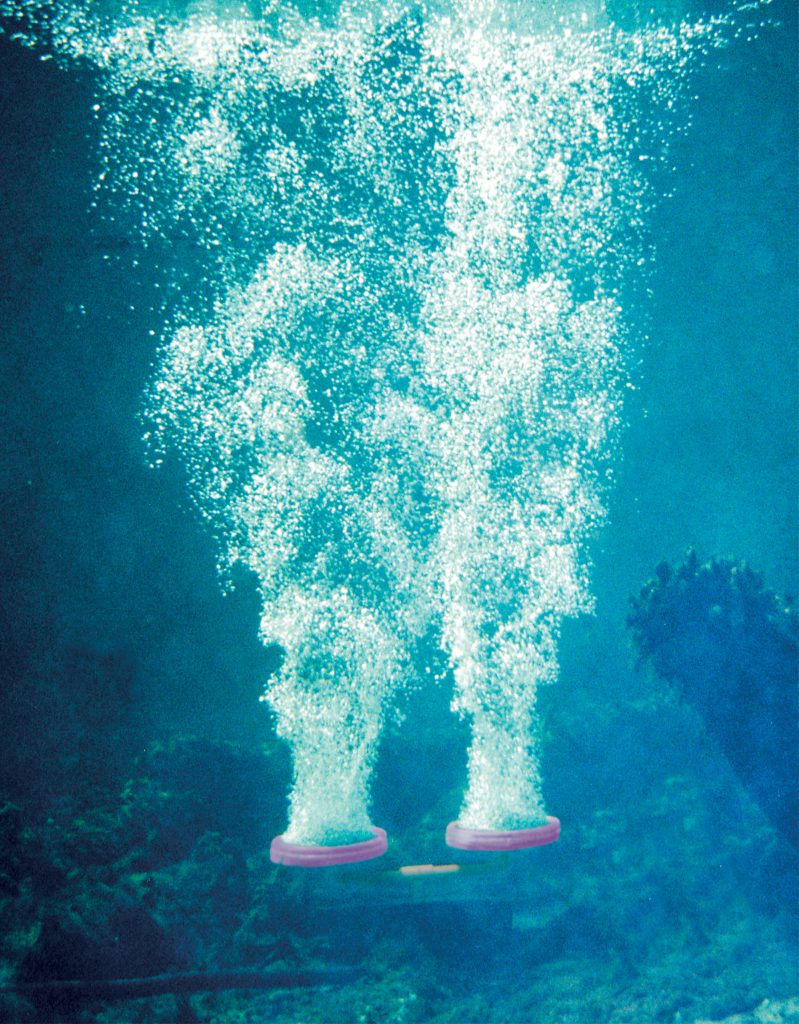
What are the pros and cons of bottom diffused lake and pond aeration when it comes to a fisheries health?
Lake and pond aeration is a great way to keep dissolved oxygen (DO) concentrations high, prevent stagnation and reduce algal mats from forming. In terms of fisheries health in Florida, there are few downsides to the installation of a pond aeration system. In warm climates, stratification is not desirable because it isolates the bottom waters from the introduction of DO. Since there are no cold-water fish to worry about in these bottom waters, the homogenous warm, oxygenated water resulting from aeration would be beneficial for most lakes and ponds around the state. Elsewhere in the country, the decision to aerate or not depends on the fish community that is present. In a lake or pond with cold-water species, thermal stratification is essential in the warm summer months to retain enough cold bottom waters for fish to survive. In this scenario, aeration may be discontinued for a few months, or the diffusers can be placed in shallow water to keep the deeper thermal layers intact. In general, the most important thing is to ensure that the aeration system is properly designed and sized for your situation, regardless of the state in which you live.
My HOA currently prohibits placing fish attractors/structures in our lake. Is this something that could be addressed with stakeholders before developing a Fisheries Management Plan?
Yes, habitat management should be addressed in a fisheries management plan. Essentially, stakeholder engagement and involvement for the HOA would help fisheries biologists discern any issues that stakeholders have, how they value the lake, and to clarify goals for management. One of the issues may be lack of habitat and a goal would then likely be to improve habitat. Then, steps could be taken to make habitat improvements that are aligned with not only stakeholder goals but also agree with HOA guidelines.
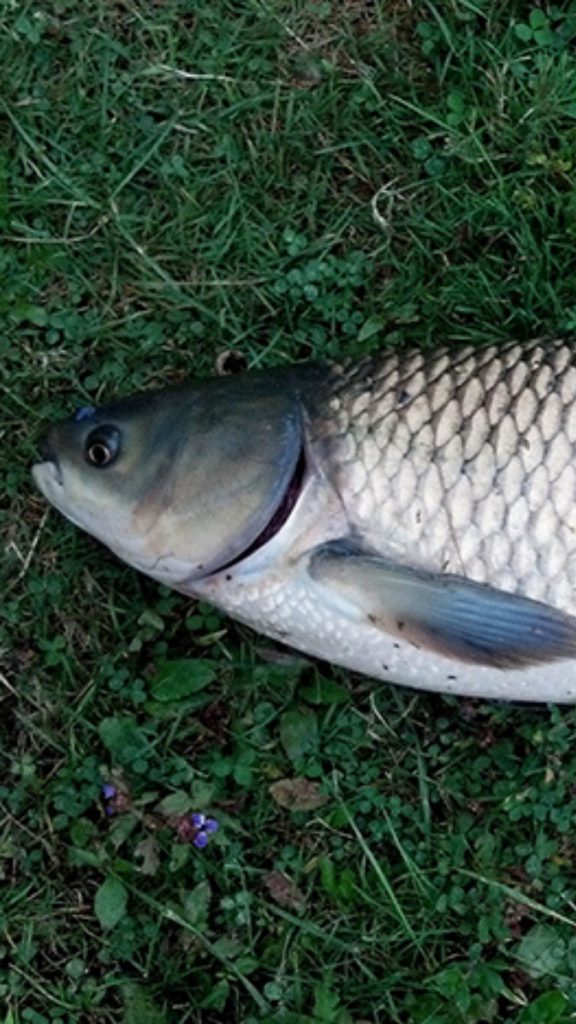
Do you have management plans that help eliminate non-native or invasive species?
Yes, we develop management plans that can help manage non-native weeds. Our management plans outline strategies to meet your goals or the goals of all stakeholders. For example, if the goal is to create a balanced and healthy fishery, then we develop a plan that has strategies that could include fish stocking, selective harvest, habitat management, fish feeding, or a variety of others techniques. Similarly, if the goal is to eliminate non-native plants, then we develop strategies (both short term and long term) that will accomplish this goal.
How much do chlorides from road salt effect a fishery?
It goes without saying that road salt inputs of sodium and chloride (as well as other frequent inclusions like calcium, magnesium, and potassium chloride) are not ideal as they can cause numerous issues with freshwater ecosystems. In freshwater, fish are among the most salt-pollution tolerant organisms; especially compared to other more sensitive aquatic taxa such as invertebrates and amphibians. So, the short answer is – road salt inputs should be minimized as much as possible for the benefit of the entire aquatic ecosystem – but impacts are likely to be seen elsewhere before becoming evident in fish. To reduce these impacts road salt use should be minimized particularly near surface waters and wetlands as much as possible.
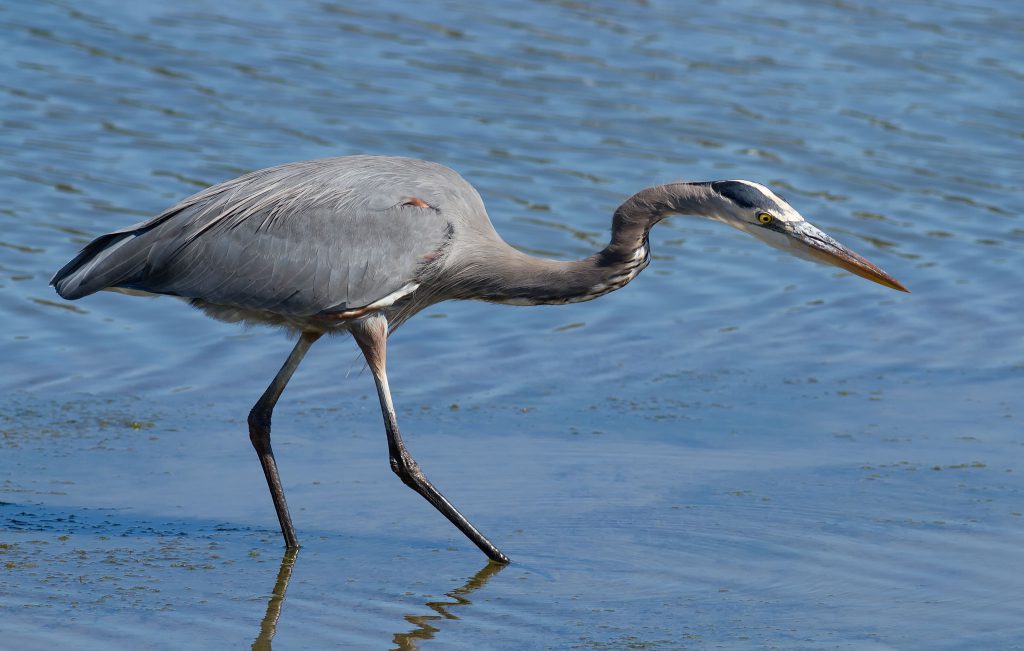
A blue heron is enjoying my newly stocked rainbow trout in my 2/3-acre pond in southern Vermont. What do you suggest?
Herons hunt by sitting quietly near the water’s edge and waiting for fish or other aquatic life to swim too close. There are several techniques that may help when a heron decides to hunt in your pond:1. Try placing a heron decoy in the spot you most often see them – as a solitary species they will often decide to dine elsewhere.2. Since herons like to move along shore, placing obstacles near their favorite spots can swings the advantage towards the fish.3. Providing dense cover for fish can reduce the heron’s effectiveness4. Find out what is attracting your fish to the shallow areas where the herons hunt and remove it or modify so the fish are not drawn to this area – for example if you feed near shore, begin feeding in deep water instead.If all else fails continued harassment/startling may eventually cause the bird to seek quieter hunting grounds elsewhere. Noise, movement, dogs, and physically approaching them can all be effective.
Does your pond have to be deep to grow big fish?
No, ponds do not need to be deep to produce excellent fish growth, as long as water quality is optimal fish can be successful in a variety of depths. In fact, most commercially operated fish grow-out ponds are 3-4’ deep. It is worth noting that ponds this shallow often require aeration due lower water volume with a given fish density (which is often based on surface acres). Fish also tend to be more vulnerable to predation in shallow ponds without a deep-water refuge. In the north, ponds need to be deep enough to allow fish to over winter, generally at least 6 feet deep.
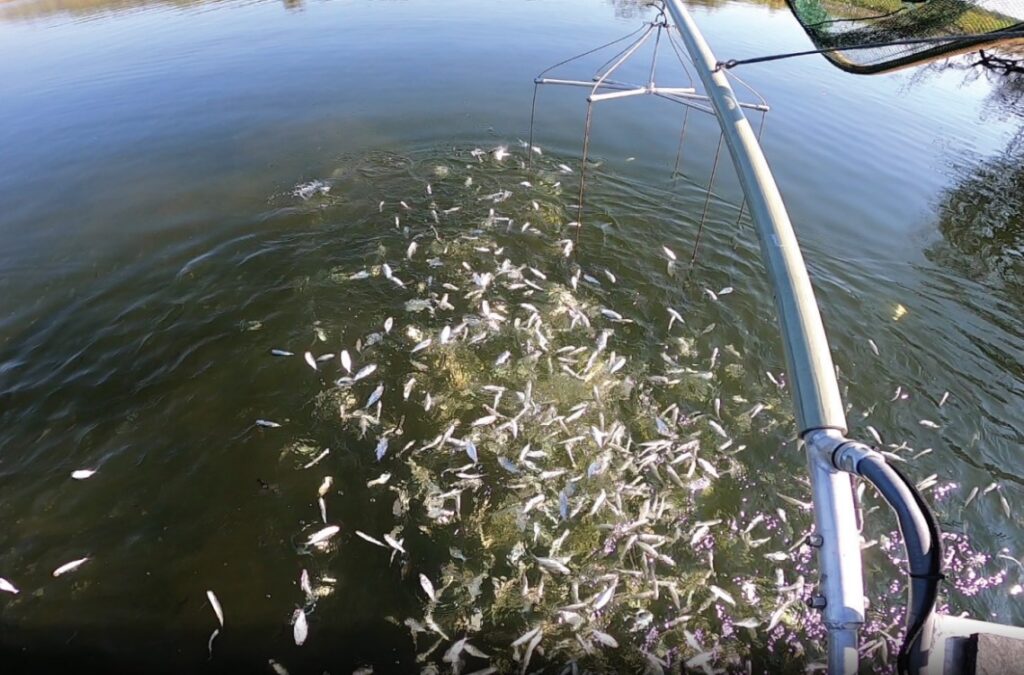
What are the maximum depths that can be reached when electrofishing? Are there other methods of collecting data from deep swimming fish?
Electrofishing can reach around 6 to 8 feet below the boat and has a radius of 10 to 12 feed around the anode and cathode. There are numerous methods of collection in the tool belt of a fisheries biologist. Trap nets, gill nets, trammel nets, trawls, haul seines, shore seines, weirs, trot lines, and of course hook and line angling all have appropriate applications and may be employed in addition to, or in place of, electrofishing depending on scenario. Timing of the survey is also an important variable – often deep dwelling fish utilize shallow habitats at certain times of the year or at night and can be easily collected during these times. Most surveys of lakes and ponds that support benthic/profundal dwelling fish will utilize trap nets, gill nets and trawls to ensure these fish are adequately represented in the data.
According to Fisheries Biologist, 20 to 30% of cover is a good balance for a fishery. Is this 20 to 30% of surface cover or submerged cover? How do you factor in the height of the fish cover?
When talking about incorporating the height of submersed plants, then you are looking at habitat on a 3-dimensional view. When Fisheries Biologist recommend 20 to 30% of cover, we are including surface coverage as well as submersed plants in that calculation. Another way to look at it, depending on the shape of your lake, if you have a lot of shoreline or if you have a lot of open water, the percentage of cover will vary. The 20 to 30% is not required but it is something to shoot for when building your fishery. For instance, if you have a lake that has a lot of open water, you may want to consider 20 to 30% of shoreline coverage compared to surface coverage. Having a conversation with a Fisheries Biologist or taking an aerial view of the lake can help you determine what and where the best habitat should be in order to get into that ideal 20 to 30% range.
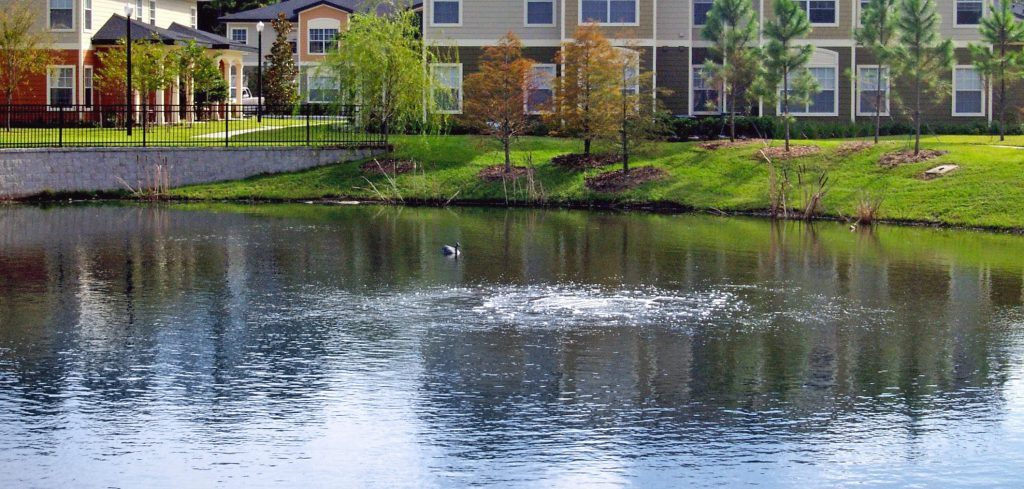
Considering pond depth, when should bottom diffuser aeration be used instead of fountains?
It depends on what your goals are for the body of water and what species you have in your fishery. The bottom diffused aeration tends to be more selective about where the oxygenation happens, whereas the surface aeration is going to do an excellent job aerating the surface layer but it may not penetrate as deep as the diffused aeration system. A fountain may be a good option if you have a two-story fishery where you want to aerate the surface waters and keep the lower, cold water layer intact. Overall, one aeration system may be more beneficial over the other, however, that cannot be determined until professional Fisheries Biologist examine the fishery.
Do lakes that are spring fed pose any problems?
Spring fed lakes often have superior water quality; therefore, they can potentially support a more diverse fishery. If you have a spring fed lake, even in southern climates, you may be able to support a cold-water species such as rainbow trout or brook trout longer through the year. Spring fed waters should be tested to find out what those water quality perimeters look like, however, there should not be any specific problems with spring fed lakes.

What are the unique problems for artificial lakes with concrete liners?
The important thing about a concrete lake that has a liner is that it is going to prevent aquatic vegetation to be established which can be a good thing depending on your goals. Habitat management becomes critical in a situation like this, therefore, looking into structures that are not going to damage that liner but that would make the lake look more natural. The use of artificial structures, trees or floating wetlands might be the ideal solution for making the aquatic ecosystem more natural.
What is an acceptable predator to prey ratio for a balanced population?
As fisheries managers, it’s important to aim for that balance between predator and prey. The rule of thumb has always been anywhere from five to ten pounds per acre of bait fish or forage fish for every pound per acre of sport fish. If you have a highly productive system where you have a healthy phytoplankton bloom, you may want to shoot for ten pounds per acre (10:1 ratio). However, if you are managing for trophy fish, you may want to increase that ratio to twenty to twenty-five pounds of bait or forage fish for every pound of sport fish. All in all, the ratio depends on your fishery goals. Though, if your ratio falls below five pounds per acre, you will run into an unbalanced ratio that will need to be improved.
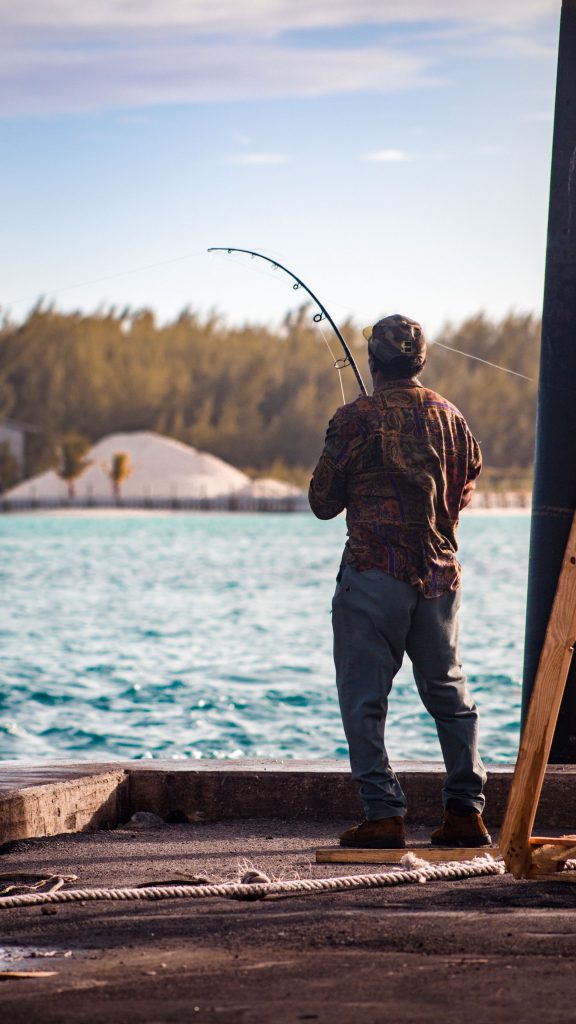
What is the average cost of a Fisheries Management Plan?
It depends on the goal of the fishery, your timeframe to achieve those goals and the size of the waterbody. The budget often times determines the timeline to reach your management goals. The bigger the budget is annually, the quicker we can get you to your management goal. However, that doesn’t mean that you can’t get closer to your goal if you are working with a smaller budget.
Contact Us to Build Your Lake Management Plan
Call us at 888-480-5253 or complete the form below to connect with an aquatic management expert.
SOLitude Lake Management is a nationwide environmental firm committed to providing sustainable solutions that improve water quality, enhance beauty and preserve natural resources.
SOLitude’s team of aquatic scientists specializes in the development and execution of customized lake, stormwater pond, wetland and fisheries management programs. Services include water quality testing and restoration, algae and aquatic weed control, installation and maintenance of fountains and aeration systems, shoreline erosion control, muck and sediment removal and invasive species management. SOLitude partners with homeowners associations, golf courses, private landowners, businesses and municipalities. SOLitude Lake Management is part of Rentokil, a leading business services company, operating across the United States, Canada and Puerto Rico.
For more information, visit SOLitude Lake Management at solitudelakemanagement.com, and connect on Facebook, LinkedIn and Twitter.









